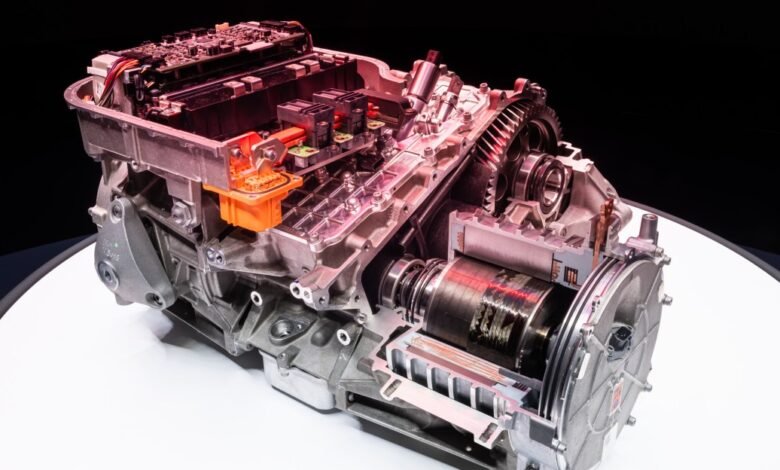Ferrari Unveils Its 1000-HP Electric Supercar

▼ Summary
– Ferrari previewed the chassis and powertrain of its first electric vehicle, the Elettrica, but did not reveal the completed car.
– The EV will have a top speed of 193mph, up to 1000 horsepower in boost mode, and a 329-mile WLTP range.
– Ferrari will create a unique sound by amplifying actual powertrain vibrations through an accelerometer and proprietary algorithm.
– It will be a four-door, four-plus seat vehicle, making it Ferrari’s first four-door model and similar to the Purosangue SUV.
– The Elettrica is expected to cost at least €500,000 and features a 122kWh battery assembled by Ferrari with 350 kW charging capability.
Ferrari has officially pulled back the curtain on the advanced technology that will drive its first fully electric supercar, a vehicle poised to deliver staggering performance figures and redefine expectations for high-end EVs. During a recent presentation at its Maranello headquarters, the legendary automaker showcased the chassis and powertrain components of the upcoming model, including its battery pack and electric motors, though the final body design remains under wraps.
The completed car is expected to make its full debut next year, and while the name “Elettrica” is currently a placeholder, it may well become the official title. Speculation about the vehicle’s body style is already swirling, with some industry observers suggesting it could take the form of a shooting brake, wagon, or compact crossover, based on camouflaged test vehicles seen on Italian roads.
Ferrari confirmed several headline specifications, including a top speed of 193 mph, a maximum power output of 1000 horsepower in boost mode, and an estimated range of 329 miles measured on the WLTP cycle. Rather than simulate an engine note artificially, the company plans to use an innovative acoustic system that captures genuine vibrations from the powertrain. An accelerometer mounted beneath the inverter records motor vibrations, which are then amplified and shaped by a proprietary algorithm to produce a unique sound signature.
Driving enthusiasts will find plenty to appreciate in the technical details. The model will feature independent electric motors, rear-wheel steering, and an active suspension system that does away with the conventional anti-roll bar. With four doors and seating for at least four occupants, the new EV appears to share more in common with the Ferrari Purosangue SUV than with the brand’s traditional two-seat sports cars. This also marks Ferrari’s first-ever production vehicle with four doors.
Positioned for a new generation of affluent buyers, the Ferrari Elettrica is projected to carry a starting price of at least €500,000 (approximately $580,400). The chassis makes extensive use of sustainable materials, incorporating 75 percent recycled aluminum, while the fast-charging battery is fully integrated into the vehicle’s floor to achieve a low center of gravity and enhance handling dynamics.
The battery itself consists of 15 modules using a nickel-manganese-cobalt chemistry, with a total gross energy of 122 kWh. Cells will be supplied by SK On, though final assembly of the battery pack will be handled in-house by Ferrari. While an overall torque figure has not been released, the company confirmed a 0-62 mph (100 km/h) acceleration time of just 2.5 seconds. Thanks to an 800-volt electrical architecture, the Elettrica will support DC fast charging at up to 350 kW. An innovative system will simulate gear shifts while actually managing regenerative braking levels.
Ferrari, like several other exclusive sports car manufacturers, has taken a measured approach to electrification. The company has already postponed a second electric model until 2028, citing weaker-than-expected demand. Similarly, rival automaker Lamborghini has delayed the launch of its own first EV until 2029, pointing to market fluctuations as a key factor.
(Source: The Verge)





